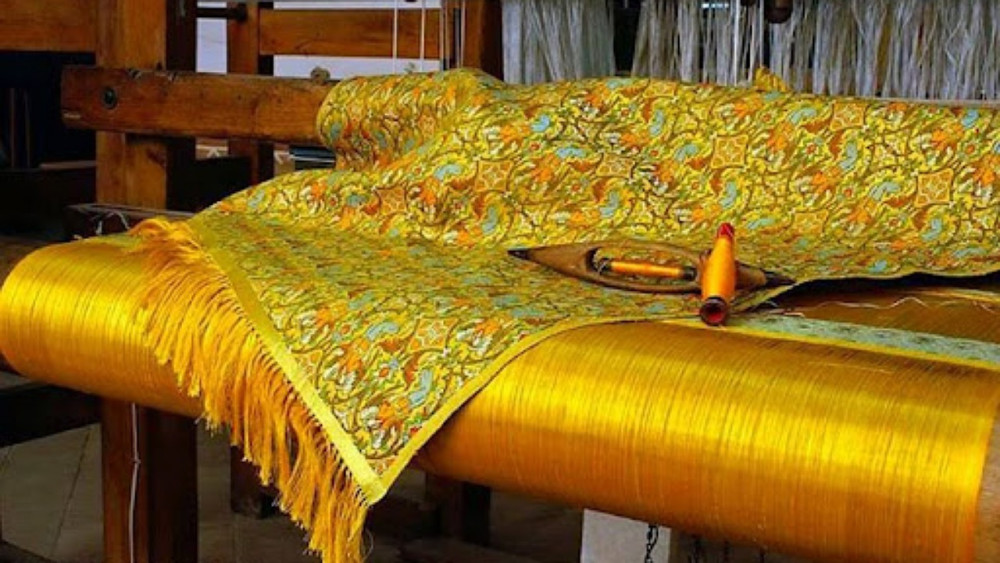
Zari Bafi or Brocade of Kerman
Zari or Brocade is one Iran’s most beautiful and ancient handicrafts. For centuries Iranians have been proud of Zari Bafi (making Zari) which also is one of the representatives of Iran handicrafts. The art – craft of Zari has been practiced in Iran from centuries ago. In addition to many remaining artifacts that have been discovered, there are also literature and historic documents that prove Zari existed from ancient times.
The word “Zari” refers to a delicate, exquisite and expensive fabric in which the wraps are silk yarns and the wefts are colorful yarns and “Golabatoon” which is a fine silk yarn around which golden thread has been twisted. It can be said certainly that Zari gained more attention beginning from Ilkhanate dynasty and was made in many cities such as Kashan, Tabriz, Soltanieh and Herat. The Ilkhanate kings were found of Zari so much that they even ordered for their “Taraz” to be made from Zari Bafi works. Taraz was a kind of fabric that had writing on its margins.
It was a costume for a king to have a new Taraz sewed for him when he was crowned as the new ruler. During the Safavid dynasty, Zari was greatly supported by the kings, in particular by Shah Abbas Safavid. By his order, centers and workshops of this craft developed more than before. Zari became of the most dominant handicrafts and many beautiful and unique pieces of Zari were created in this era some of which are kept in museums.
Zari or Zarbaft is used to describe a fabric that contains silver or gold threads. These threads are called “Golabatoon”. Usually the golden thread contains two to three percent gold. However, some of the Golabatoon from the Safavid had 50 percent real gold. In addition to Zari Bafi, Golabatoon is used to create Filigree and Zari Douzi which is a kind of embroidery. Filigree are thin threads of silver or gold that are used to design fabrics or other objects. Images of historic and folklore stories, birds, and foliage are the most used motifs in Zari.